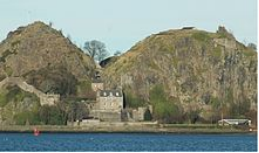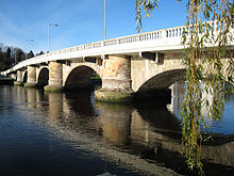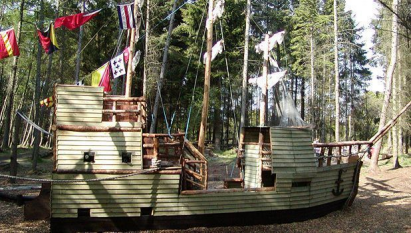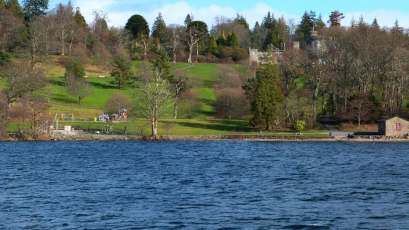Dumbarton, West Dunbartonshire, Scotland, UK 作者: 来源: 发布时间:2021-07-29
I. Population and Area
Continent: Europe
Country: The U.K
State/Province: Scotland
City/Town: Dumbarton, West Dunbartonshire
Total Area: 2.63 (sq mi)
Population in 2018: 20.5 (thousand)

Reference Website:
https://www.google.com.hk/search?newwindow=1&safe=strict&ei=xTxpX574NLa20PEP47Gq8AM&q=total+area+of+Dumbarton%2C+West+Dunbartonshire+&oq=total+area+of+Dumbarton%2C+West+Dunbartonshire+&gs_lcp=CgZwc3ktYWIQA1CjkSlYo5EpYP2SKWgAcAB4AIAByQOIAckDkgEDNC0xmAEBoAECoAEBqgEHZ3dzLXdpesABAQ&sclient=psy-ab&ved=0ahUKEwje7sjcuPvrAhU2GzQIHeOYCj4Q4dUDCA0&uact=5
https://www.google.com.hk/search?newwindow=1&safe=strict&ei=uzxpX6zAM6mu0PEPuJG28AY&q=population+of++Dumbarton%2C+West+Dunbartonshire+&oq=population+of++Dumbarton%2C+West+Dunbartonshire+&gs_lcp=CgZwc3ktYWIQAzoFCCEQoAFQqo4pWKqOKWC1lCloAHAAeACAAcwGiAHwC5IBCzItMS4wLjEuMC4xmAEBoAECoAEBqgEHZ3dzLXdpesABAQ&sclient=psy-ab&ved=0ahUKEwjsieXXuPvrAhUpFzQIHbiIDW4Q4dUDCA0&uact=5
II. Natural Geography (environment and resources)
Geography
From 1975 Dumbarton lent its name to a local government district in the Strathclyde region of Scotland. In 1996 the administrative functions of this district transferred to the West Dunbartonshire and Argyll and Bute unitary councils (see Subdivisions of Scotland). Dumbarton town currently serves as the administrative centre of the West Dunbartonshire authority. There is a Dumbarton constituency of the Scottish Parliament and a former Dumbarton constituency of the House of Commons.
Transport
Dumbarton is situated on the main A82 road, linking Glasgow to the western Scottish Highlands. Dumbarton is a short distance from Balloch pier, where cruises can be taken on Loch Lomond. Dumbarton is also served by three railway stations: Dumbarton Central, Dumbarton East and Dalreoch railway station. All three stations are situated on the North Clyde Line, which provides a direct link from Helensburgh in the west, through Glasgow Queen Street to Edinburgh Waverley in the east.

III. ECONOMY
Average Salary in Dumbarton, Scotland: West Dunbartonshire £25k


The average salary in Dumbarton, Scotland: West Dunbartonshire is £25k. Trends in wages decreased by -100.0 percent in Q2 2020. The cost of living in Dumbarton, Scotland: West Dunbartonshire is 100 percent higher than the national average. The most popular occupations in Dumbarton, Scotland: West Dunbartonshire are Payroll Administrator, Bar Manager, and Change Management Consultant which pay between £15k and £39k per year. The most popular employer in Dumbarton, Scotland: West Dunbartonshire is BAE Systems Inc..
Popular Employers in Dumbarton, Scotland: West Dunbartonshire:
BAE Systems Inc. pays its employees an average of ₤37,536 a year. Salaries at BAE Systems Inc. range from an average of ₤25,750 to ₤54,925 a year. BAE Systems Inc. employees with the job title Principal Mechanical Engineer make the most with an average annual salary of ₤49,503, while employees with the title Mechanical Engineer make the least with an average annual salary of ₤30,915.
Reference Website:
https://www.payscale.com/research/UK/Location=Dumbarton-Scotland%3A-West-Dunbartonshire/Salary
IV. Industrial Characterisitics
Major industries:
Shipbuilding:
From the mid 18th century to the early 19th century Dumbarton's main industry was glassmaking. As the glass industry declined the town became a major centre for shipbuilding and remained so well into the 20th century. There were many shipbuilding yards, although a number of them were later absorbed by larger yards. A great many ships were built in the town, the most famous of which is probably the Cutty Sark which was built by Scott & Linton, she was one of the final Tea Clippers to be built, and one of the fastest. The ship is the last survivor of its type and can be seen today at dry dock in Greenwich, London.
Whisky:
Whisky production also grew to become a major industry in the town. In 1936 Canadian distilling company Hiram Walker bought over the Glasgow-based distiller George Ballantine & Son Ltd. In 1938 they built a large whisky distillery on the river Leven (on the site of the Archibald McMillan shipyard). As a result, the town became known as a major centre of the whisky industry in the mid to late 20th century. Hiram Walker itself was acquired by Allied Breweries in 1988 to form Allied Distillers, itself becoming part of Allied Domecq before eventually being taken over in 2005 by the French-based alcohol giant Pernod Ricard. The large Dumbarton distillery had been mothballed since 2002 and not long after the Pernod-Ricard takeover the giant red-brick buildings of the Dumbarton 'Ballantine's' distillery which had dominated the town for over sixty years were earmarked for demolition and redevelopment, the remains of the distillery were demolished throughout January and February 2017. The large bonded warehouse complex to the east of the town and the bottling complex to the north-west were retained.
Other industries:
With the decline of the whisky industry, Dumbarton is becoming more a commuter town for those who work in nearby Glasgow and other locations. The Faslane naval base is a major employer for the area. The Strathleven Industrial Estate near Dumbarton was once the location of several major manufacturers such as Burroughs (Adding Machines) and Westclox. Technology overtook these companies and they closed down with the loss of many jobs. The estate has also been the home of Polaroid UK since 1965. This was the largest Polaroid plant outside the US and at its peak it employed about 1800 people. Failing to recognise the impact of digital photography was its downfall and while they still have a presence in Dumbarton, less than 100 people are now employed there (mainly in the manufacture of sunglass lenses). The generator supplier Aggreko plc has had a facility in the town since the 1970s, in 2012 it opened a new, larger facility at the former J&B plant.
Major projects and related introductions:
West Dunbartonshire Council’s new Dumbarton office has been named the best regeneration project in Britain.
The multi-million pound project at 16 Church Street transformed the site into a modern and efficient town centre base while retaining the William Leiper-designed Grade A listed façade. The building was nominated in the regeneration category at the prestigious Royal Institute of Chartered Surveyors (RICS) national awards, following a win at the regional awards earlier this year. Since opening, the state-of-the-art facility – which accommodates 500 Council staff - has improved access to services for residents, brought economic benefits to businesses in the town and brought savings to the Council in the region of £400,000 per year. The conservation project, which was supported by Historic Environment Scotland, has also ensured Dumbarton’s heritage is preserved. The honour is only awarded to a scheme that can demonstrate outstanding best practice and an exemplary commitment to adding value to its local area.
Reference Website:
https://www.west-dunbarton.gov.uk/council/newsroom/news/2019/oct/church-street/
V. Attractions
1. Finlaystone Country Estate:

Finlaystone Country Estate is an established visitor attraction managed by the family of the Chief of the Clan MacMillan. The estate is located just ten minutes west of Glasgow Airport and is open all year. With its spectacular views across the Firth of Clyde, Finlaystone offers colourful gardens, imaginative woodland play areas, BBQ sites and picnic areas, events and tumbling waterfalls. The estate combines history with adventure in a fun day out for the family.
2. Balloch Castle Country Park:

"We walked in and were blown away with the beautiful tall trees, the gorgeous landscape, the walled garden, the friendly atmosphere, and of course breath-taking views of Loch Lomond."
3. Loch Lomond Bird of Prey Centre:

Loch Lomond Bird of Prey Centre is located in a natural woodland which retains much of the original woodland and streams to provide the ideal natural setting for nearly 40 Birds of Prey & Owls. The centre is home to over 20 Owls, representing every native species as well as unique or unusual species from other parts of the world. See "Orla", and "Scout" our two magnificent female Golden Eagles. See a selection of hawks and owls fly during our daily flying shows in the flying area. Hear how these magnificent creatures have evolved to become the success predators they are, and how they live on the edge of survival every day. The education cabin provides a comfortable environment to learn about our residents. Full of information and displays of eggs, skulls and feathers. Children can complete the quiz sheets and win a prize, or colour in sheets of our various birds. Watch our bird of prey DVD's. An educational day out for all ages, and a chance to relax in wonderful surroundings.
Reference Website:
https://www.tripadvisor.com/Attractions-g186586-Activities-a_allAttractions.true-West_Dunbartonshire_Loch_Lomond_and_The_Trossachs_National_Park_Scotlan.html
VI. History
Dumbarton history goes back at least as far as the Iron Age and probably much earlier. It was the site of a strategically important Roman settlement known as Alcluith of a province named Valentia.The next record of a settlement in Dumbarton is a record in Irish chronicles of the death of Guret, rex Alo Cluathe ("king of Clyde Rock"), in AD 658.
The fortress of Dumbarton was the stronghold of the kingdom of Alclud, and the centre of British power in northern Britain, for more than two centuries from the mid-seventh century, until the Vikings destroyed the fortress after a four-month siege in 870. The loss of the British power base led to the emergence of the new kingdom of Strathclyde, or Cumbria, with a major centre at Govan. The title "king of the Britons of Srath Clúade" was first used in 872. Dumbarton was later the county town of the county of Dunbartonshire, formerly known as Dumbartonshire. The name comes from the Scottish Gaelic Dùn Breatainn meaning "fort of the Brythons (Britons)", and serves as a reminder that the earliest historical inhabitants of Clydesdale spoke an early form of the Welsh language.
Alexander II granted the status of Royal burgh in 1222.
In September 1605 Chancellor Dunfermline reported to King James VI that inundations of the sea were likely to destroy and take away the whole town. It was estimated that the flood defences would cost 30,000 pounds Scots, the cost being levied nationwide.
A bridge over the River Leven had been proposed in 1682. The Old Dumbarton Bridge was eventually built in 1765 by John Brown of Dumbarton, at the site of a ferry crossing. It was constructed at the behest of the Duke of Argyll, who was anxious to obtain access to Glasgow from his estate at Rosneath. The bridge, with five segmental arches with rounded cutwaters, resulted in the extension of Dumbarton to West Bridgend. The bridge was substantially developed in 1884 and 1934.It is now B-listed and was refurbished in 2006.
During World War II Dumbarton was heavily bombed by the German air force. The Germans were targeting the shipyards, and the area in the vicinity of the yards was consequently hit, with Clyde and Leven Street being severely damaged. In an attempt to lure the German aircraft away from the shipyards, decoy lights were routinely placed on the Kilpatrick hills above the town, lights were set out on reservoirs to mimic those of the shipyards reflecting on the waters of the Leven and Clyde. The ploy was sometimes successful in diverting the bombers and many bombs fell harmlessly onto the moors and lochs. The Auchenreoch Muir 'Starfish' site above Dumbarton was part of a system of decoy fires operated by the RAF that used pyrotechnics to simulate the appearance of the incendiaries dropped by the German pathfinder aircraft, thereby diverting the bombers from their intended targets. 23 bomb craters are still identifiable in the area around the surviving control bunker as evidence of the success of the diversion.
VII. Culture
Sports
There were at one stage two league football clubs from the town, Dumbarton Harp F.C and Dumbarton F.C (Also known as 'Sons of the Rock'). Dumbarton F.C. are the only league club in Dumbarton still in operation, playing in the Scottish Professional Football League at Scottish League One level.
Dumbarton F.C play home games at the Dumbarton Football Stadium (known since 2018 as the C&G Systems Stadium for sponsorship reasons) adjacent to Dumbarton Rock. They won the 1882–83 Scottish Cup and are five times runners-up.
The Scottish League was formed in 1890 with Dumbarton as founding members. The first championship was shared between Dumbarton and Rangers, in the absence of a goal-difference rule to act as a tiebreaker.
Arts
Novelist A. J. Cronin's maternal grandfather, Archibald Montgomerie, owned a hat shop at 145 High Street.
Dumbarton is the birthplace of David Byrne, a Grammy Award, Academy Award and Golden Globe-winning musician best known as the founding member and principal songwriter of new wave band Talking Heads.
Glaswegian band Franz Ferdinand released a remix of their hit song, "Take Me Out" called "David Byrne Was Born in Dumbarton" which heavily sampled the Talking Heads song, "Burning Down the House".
Royal Scottish Pipe Band Championships
Held in Dumbarton since 2000, the Royal Scottish Pipe Band Championships sees over 140 bands enter yearly, including representatives from Sweden, Denmark, Netherlands and Ireland. The championships is one of the biggest and most prestigious pipe band events in the world. Besides the pipe band championships there is a funfair and Highland dancing competitions.
Theatre
The Denny Civic Theatre is used by a number of local groups, including the Dumbarton People's Theatre.
VIII. Other information
No one can be really certain when the Christian message first came to Dumbarton. The 'Dark Ages', that period following the departure of the Romans from Britain being but rarely, and often inaccurately, recorded. What is certainly known is that Dumbarton was the capital city of an extensive Cymric (Britons) kingdom which stretched from Glen Falloch southwards as far as modern Morecombe. The only westward part of the land outwith the kingdom of Strathclyde was the Galloway peninsula.
To the Britons, Dumbarton was known as Alcluyd, Alcluid, Alclwyd, Alcluithe, Alclut, all meaning the Rock on the Clyde. To the Gaelic speaking people of the kingdom of Dalriada (roughly corresponding to modern Argyll) the town was known as Dunbretane, Dunbretan, Dumbartane, and finally Dumbarton (the fort of the Britons). The Annals of Ulster contain one of the earliest references to a Christian community in Dumbarton. In 314AD it records that three bishops accompanied by a deacon represented Alcyuyd at a conference in Arles, the former capital of Burgundy in south-east France. Throughout the 6th century frequent references to Alcluyd occur. Again in the Annals of Ulster it is shown that bishops of the Celtic Church were taking their name and style from Dumbarton, As an example, in 554AD the Annals record the death of Cathul MacFergus, Bishop of Alcluyd. At about the same date, in the Episcopus Britannorum, Kentigern, more widely known as Mungo ('the beloved'), is recorded as having gone with his monks from Glasgow to Alcluid, 'where they laboured with great diligence among the people'. In the 6th century Modwenna, an Irish princess, endowed a chapel, dedicated to St Patrick, on the south side of Dumbarton Castle. Bede in the 7th century refers to Alcluyd as a 'well fortified city'.
One, perhaps conclusive, piece of evidence of a church on this site was the discovery in 1848, when installing heating pipes under the floor, of a gravestone featuring a cross and a sword. It lay north/south and formed part of the flagged passage at the east end of the church. Donald Macleod, the well-known local historian, concluded that it appeared to belong to the Crusades period of history – the late 11th or early 12th century. Aisles of churches have long been used for burial and therefore a church must have stood here in the 11th century. Certainly it would be reasonable to assume that when King Alexander II granted royal burghal status in 1222 to 'his new town beside his castle at Dumbarton', there was already a well-established church.
IX. Contact information
Mayor/Officer: Jonathan McColl
Tel: 01389 737000.
Mail: foi@west-dunbarton.gov.uk
Reference Website:
https://www.west-dunbarton.gov.uk/council/councillors-and-committees/councillor/councillors-by-name/
https://www.itspublicknowledge.info/ScottishPublicAuthorities/Authorities/authority104.aspx
